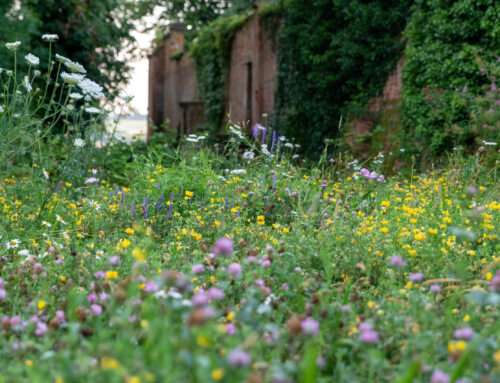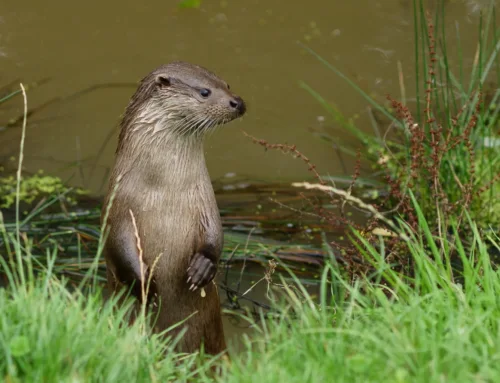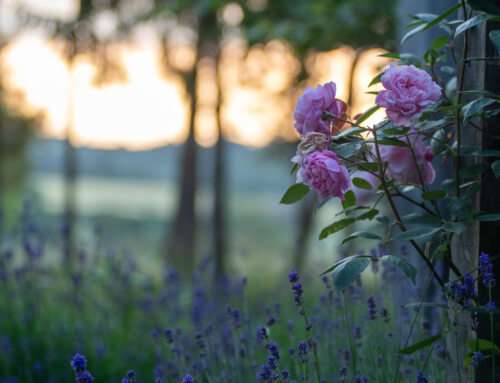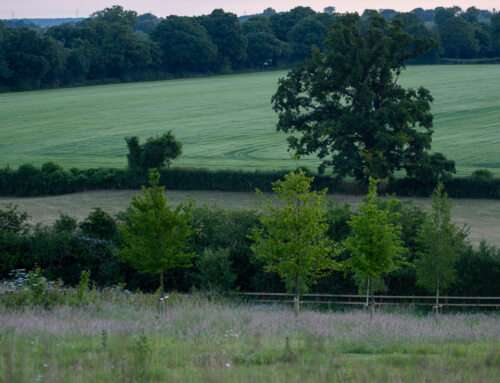Imperfection
By Ruby Simpson
Perfection is an interesting concept – and something that many humans strive for. This puts pressure on a lot of us, for various reasons; people feel they have to look perfect and portray a happy life because of social media, parents think they have to uphold unrealistic expectations because of fear of judgement; designers obsess over the tiny details that often only they will notice; and as gardeners and customers we expect delightfully symmetrical trees, equally sized plants, no pests or diseases, and beautifully manicured lawns.
But who’s to say what perfection truly is?
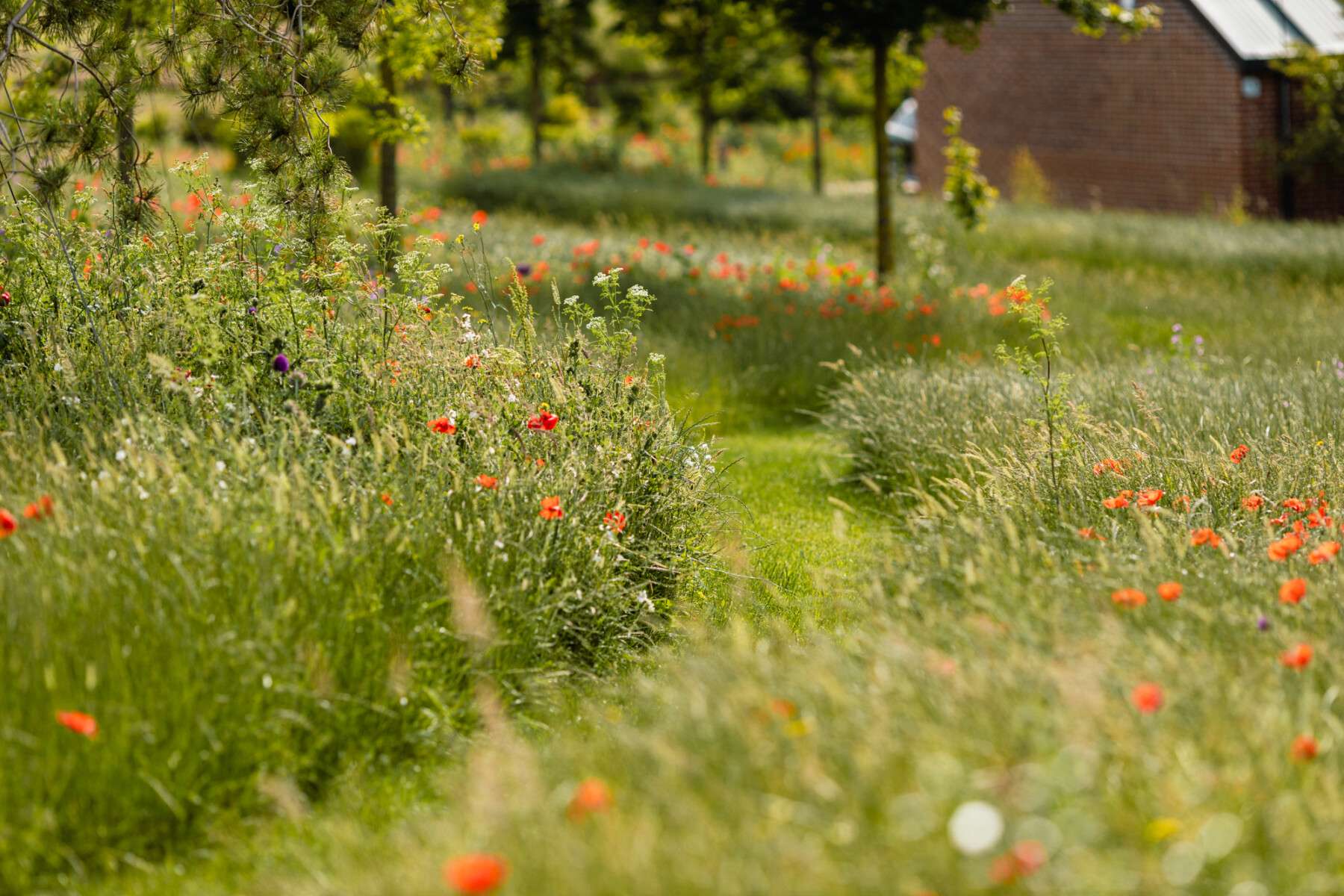
As a designer, I am a perfectionist. When I started designing, nearly 10 years ago, it was often the way that we would stick to limited species and colour palettes (Geranium ‘Rozanne’ and Rosa ‘Swany’ were solid favourites! Repeated constantly.), and frequently a monoculture of plants for high impact planting, but simple maintenance – for example, entire borders bursting with Hydrangea ‘Annabelle’, underplanted with just one variety of fern. At the time, this was popular and stylish and honestly looked beautiful in my opinion, I would still think the same now – however, after a long but exciting learning curve, I can now appreciate that it’s absolutely not ‘perfection’. This is because the more variety of flower-shape, flower colour, species of shrubs, trees and herbaceous plants you can shoehorn into your outdoor space, the better it is for our wildlife and, in turn, our planet. And that is much nearer perfection… Albeit a very human-altered version of nature, and nowhere near as good as total wilderness, but it’s a whole lot more beneficial to the planet than the stubborn precision of a purely white planting scheme, for example.
Over the last few years, we have seen what amazing things happen when humans stop interfering with nature and just leave it alone to exist. Last year, as usual, I took part in no-mow-May, but decided to do it in big patches of lawn – I kept some areas mown, for the little ones to play on, but I left some large swathes of grass to grow long. The garden not only looked more interesting, but obviously, it was better for the wildlife within the garden – and what can be more perfect than that? If we ever need to take a tree or shrub down, we chop it up and pile it into the backs of borders for the minibeasts and various other creatures that I have very limited knowledge of. We now have an ecology department at Nicholsons, which is very exciting, and they are fantastically knowledgeable, but as gardeners, we don’t necessarily need to know all the detail (unless we want to). We simply need to know that variety in species, height, shape, flower type, colour and fruits of plants (as well as many other things) can achieve wonderful things.
I read a recent article in the March edition of the RHS magazine, written about a fantastic garden called Hilldrop in Essex. One of its owners, John Little, actually did a highly interesting and inspiring talk for our design team last year, going into the ways in which ‘perfect’ isn’t necessarily ‘perfect’, and can be detrimental to our biodiversity, wildlife and the planet. His passion for the cause was one of the things driving me to write this blog. His garden isn’t planted on gorgeous fluffy topsoil with neatly arranged borders – it’s planted in sand and rubble and is packed with native plants. They weed whenever they have time, which isn’t often by the sound of it. Pruning is done in a choppy kind of way and dead shrubs are left in place to provide dead wood for wildlife that needs it, and the pictures in the article look stunning – arguably perfect actually.
If, like me, you enjoy a bit of order amongst the chaos, it’s still easy enough to make it work. In fact, the juxtaposition of the two can be quite stunning. Do keep areas of neatly mown lawn, alongside wafty meadow grass. Allow plants to self-seed in gravel areas and blur the edges between hard and soft landscaping. Limit your colour palette slightly without impeding the range of species or variation in flower shape. I’m going to go off on too many tangents if I mention everything I want to include, but I did just want to highlight that a few pests are OK, as well as a few weeds (AKA: wildflowers in the wrong place). If anything is taking over and getting out of control, it’s fair enough to address it, but don’t spray everything to within an inch of its life and expect biodiversity not to be affected.
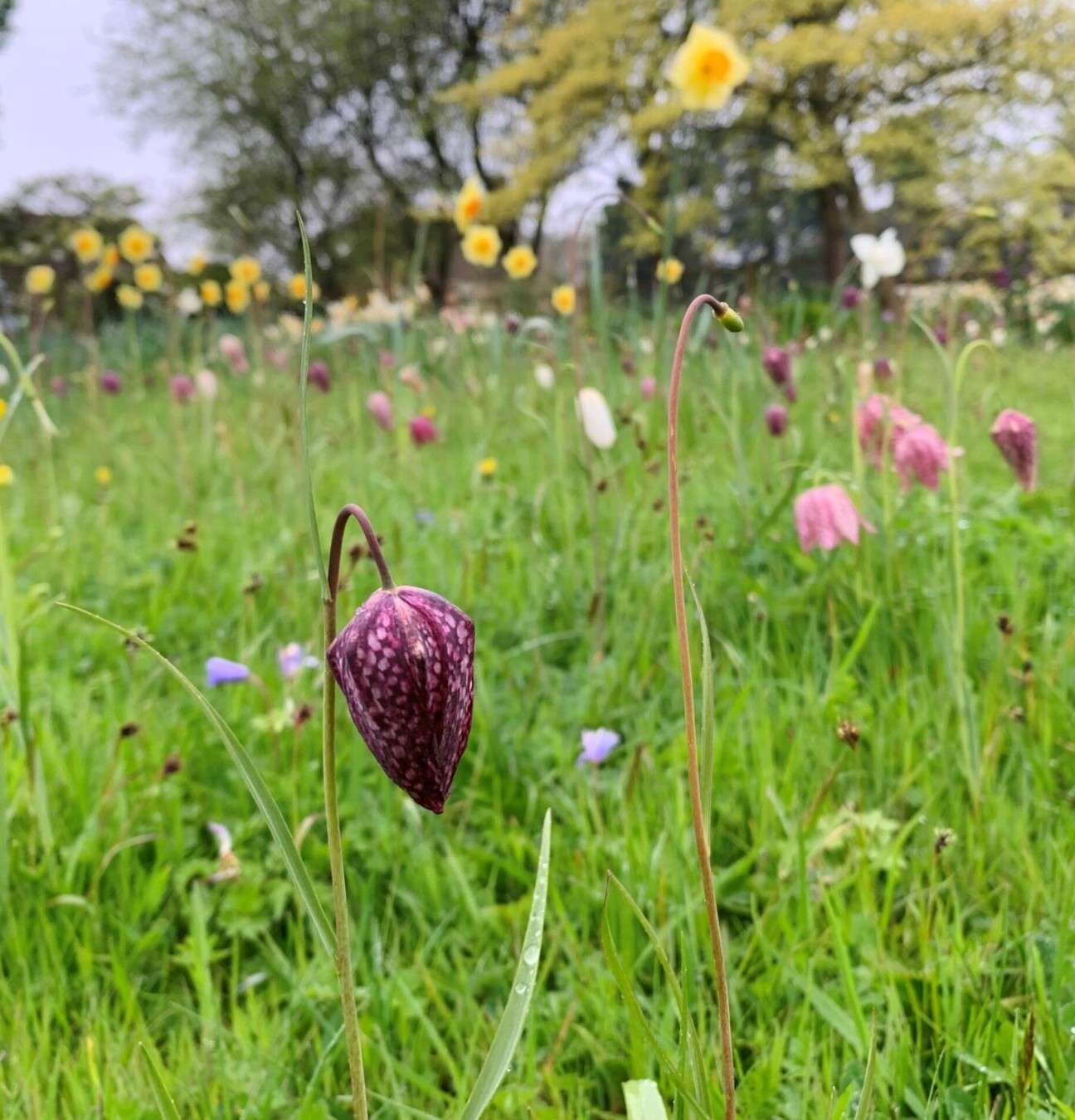
We must stop holding ourselves and nature to impossible standards – it’s not good for humans, wildlife or the planet itself. There is a big movement on rewilding at the moment – rewilding not only our gardens, but rewilding the mind, and it’s quite interesting how often these things intertwine. We desperately need to reset what we think of as perfect. If ‘perfection’ is hard to achieve, unsatisfying, and unhealthy for people and the earth, is it really perfect? Funnily enough, rewilding is often misconstrued as ‘planting nice things for the bees’, but it’s actually just the absence of human interference, to let the area do what it naturally needs to. The most breathtaking beauty I have seen in a landscape always involves purely natural wilderness, uninterrupted by humans. And these also happen to have been the most healing places to be – surrounded by the beauty, smells and sounds of nature.
Let’s try and do ourselves and our gardens a favour and reframe what ‘perfect’ really is.
